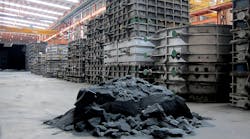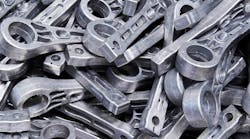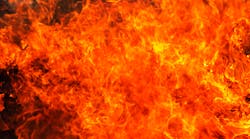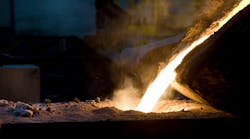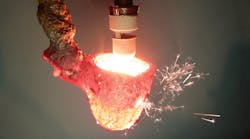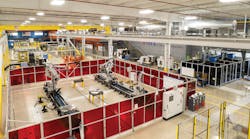Despite some notable system start-ups and an important new series-production launch, SinterCast AB reported decreased operating results and revenues for the third quarter of 2017. The results were attributed to poor timing shipments of CGI sampling cups and new installations of the SinterCast process control system.
SinterCast is a Swedish developer and licenser of compacted graphite iron production technology. The SinterCast technology is the world’s most widely used production and process control system for CGI -- a specialty grade of cast iron that has greater tensile strength, stiffness, and fatigue strength than gray iron or aluminum. It is increasingly popular with diesel and gas engine manufacturers seeking to reduce weight, noise, and emissions for their designs.
Third-quarter 2017 annualized CGI series production totaled 2.0 million “engine equivalents,” or 40,000 kg with each engine equivalent representing 50 kg.
During the most recent quarter, SinterCast completed new automation system and production capacity increases at the Teksid and Tupy foundries in Mexico, and marked the start of production for large CGI piston rings at Total Solutions & Power Co., in South Korea. The timing of the developments meant that the sampling cup shipments increased during August and September, which the company offered is a positive signal for its fourth-quarter results.
“Despite year-to-date production being 1.6% behind 2016, the year-to-date revenue from series production is 12% below 2016,” commented SinterCast president and CEO Dr. Steve Dawson. “This is primarily due to the reduction in sampling cup shipments, from 133,800 in the first three quarters of 2016 to 102,200 in 2017.”
The customized sampling cup is a critical part of the SinterCast process, and thus cup deliveries are an indicator of SinterCast CGI production. Through three quarters of 2017 activity, SinterCast sampling cup shipments increased 15% from Q1 to Q2, and 23% from Q2 to Q3, which the company reads as customers rebuilding inventories, thus reinforcing a positive forecast for the fourth quarter.
While, the current year has produced been problematic for the business, with “three high-volume programs temporarily at reduced volume” according to the quarterly statement. Series production improved in the third quarter. Two of the three programs have recovered, SinterCast noted, although reduced activity volumes continuing into July (a traditionally quiet month) reduced the prospects for growth during the third quarter.
Beyond its CGI business, SinterCast noted improved results due to its recent introduction of the SinterCast Ladle Tracker®, Cast Tracker™ and Operator Tracker™ technologies, which are available to foundries for tracking the status and progress of molten gray and ductile iron in production.

